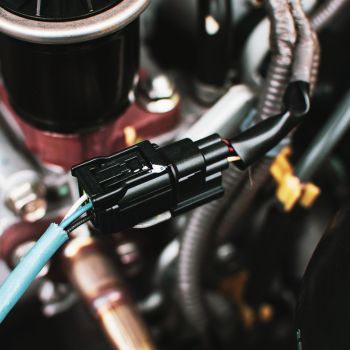Like any other component in your car, these sensors are prone to wear and tear, as well as exposure to environmental factors like dirt, moisture, and even electrical malfunctions. These issues can interfere with their ability to provide accurate readings, potentially leading to broader performance problems. Here's what you need to know about car sensors and what might happen when they start acting up. The ECM has become a cornerstone of vehicle engineering since the 1980s. It works in tandem with the OBD-II to gather and interpret data from multiple sensors scattered throughout your car. This data is used to fine-tune everything from fuel efficiency to responsiveness. Some key sensors include: As time passes and mileage accumulates, sensors can become dirty or corroded due to exposure to engine fluids or debris. Electrical faults or connectivity problems between the sensors and the ECM can also distort the data being transmitted, resulting in inaccurate readings or complete signal loss. These issues, whether caused by physical damage or general wear, can manifest in several ways: If your car seems sluggish or unreliable but diagnostic tools don't reveal an obvious fault, consider scheduling an appointment with DaSilva’s Auto Body. Our skilled technicians can conduct comprehensive diagnostic tests to assess the condition of your sensors, ECM, and other vital components. We'll provide tailored advice regarding necessary repairs or replacements. Reach out to us today to ensure your car runs smoothly and efficiently! Plastic Granulator,PE Granulator Machine,Plast Granulator,PE Granulation line,PE Pelletizer,PE Pelletizing Line, Zhangjiagang Polestar Machinery Co.,Ltd , https://www.polestarpm.com Modern cars are equipped with a network of sensors that constantly monitor various aspects of your vehicle's performance, feeding crucial data to the Onboard Diagnostic Computer (OBD-II) located within the engine control module (ECM).
Modern cars are equipped with a network of sensors that constantly monitor various aspects of your vehicle's performance, feeding crucial data to the Onboard Diagnostic Computer (OBD-II) located within the engine control module (ECM).Understanding How Car Sensors Operate
Frequent Sensor Problems and Their Symptoms
Common Car Sensor Problems
The PP/PE Granulation Line is a specialized system designed for recycling and granulating PP (Polypropylene) and PE (Polyethylene) materials.
1. PP/PE Film Granulation Line
This line is designed to process a wide range of materials including PP/PE films, woven bags, shopping bags, waste packaging plastics, and agricultural films. The capacity ranges from 200 kg/h to 2000 kg/h.
The line includes a Plastic Crusher, washing machine, vertical lifting dewatering machine, plastic granulator, cooling tank, and storage bin. It produces high-quality granules suitable for various applications.
Application Scenarios: Widely used in the recycling of plastic films and bags, agricultural films, and industrial packaging materials.
The line can handle high-moisture and dirty raw materials with multiple filtration and dewatering processes.
2. PP/PE Rigid Material Granulation Line
Suitable for processing rigid PP/PE materials such as pipes, plates, sheets, and profiles. The line features a single or double-stage extrusion process.
The line includes a single-screw extruder, hydraulic screen changer, and water-ring cutting system. It produces high-quality granules with uniform size and excellent physical properties.
Used in the recycling of rigid plastic waste from manufacturing processes, such as offcuts and regrind materials.
High output, low energy consumption, and adaptable to various materials. The line can operate continuously for 24 hours with minimal maintenance.
3. PP/PE Mixed Waste Granulation Line
Designed to handle mixed waste materials, including PP/PE films, bags, and rigid plastics. The line features a compactor/agglomerator and a two-stage extrusion system.
The line includes a conveyor belt, metal detector, compactor/agglomerator, single-screw extruder, hydraulic screen changer, and water-ring cutting system. It produces high-quality granules from mixed waste materials.
Ideal for recycling mixed plastic waste from various sources, such as industrial and household waste.
Efficient processing of mixed materials, high output, and energy-saving design. The line can handle materials with different shapes and sizes.